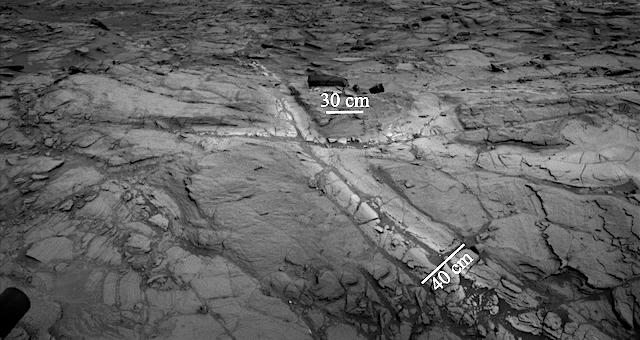 Lighter-toned bedrock that surrounds fractures and comprises high concentrations of silica — called “halos”— has been found in Gale crater on Mars, indicating that the planet had liquid water much longer than previously believed. The new finding is reported in a new paper published [May 30, 2017] in Geophysical Research Letters, a journal of the American Geophysical Union.
Lighter-toned bedrock that surrounds fractures and comprises high concentrations of silica — called “halos”— has been found in Gale crater on Mars, indicating that the planet had liquid water much longer than previously believed. The new finding is reported in a new paper published [May 30, 2017] in Geophysical Research Letters, a journal of the American Geophysical Union.
“The concentration of silica is very high at the centerlines of these halos,” said Jens Frydenvang, a scientist at Los Alamos National Laboratory and the University of Copenhagen and lead author of the new study. “What we’re seeing is that silica appears to have migrated between very old sedimentary bedrock and into younger overlying rocks. The goal of NASA’s Curiosity rover mission has been to find out if Mars was ever habitable, and it has been very successful in showing that Gale crater once held a lake with water that we would even have been able to drink, but we still don’t know how long this habitable environment endured.
“What this finding tells us is that, even when the lake eventually evaporated, substantial amounts of groundwater were present for much longer than we previously thought—thus further expanding the window for when life might have existed on Mars.”
Whether this groundwater could have sustained life remains to be seen. But this new study buttresses recent findings by another Los Alamos scientist who found boron on Mars for the first time, which also indicates the potential for long-term habitable groundwater in the planet’s past. [More at links]








